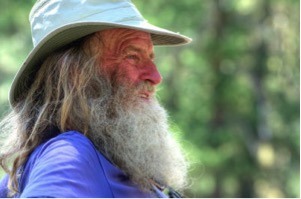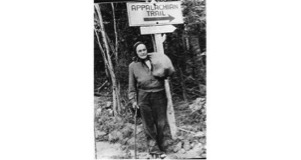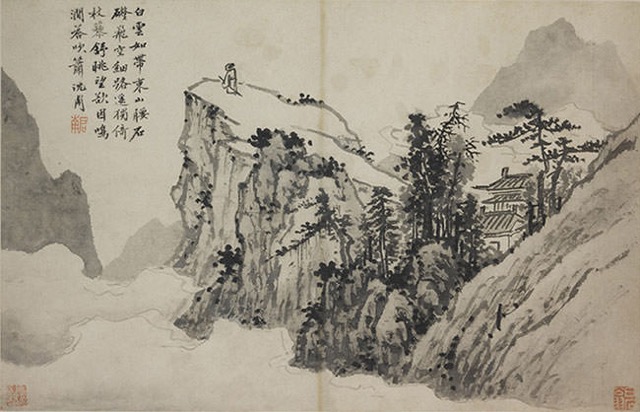There is some disagreement among anthropologists about the nature and prevalence of violence among prehistoric human beings. The archaeological evidence for violence in the prehistoric world is scant, but it is there. There is no sense in romanticizing early human beings as if they lived in a perpetual paradise. No, they were quite capable of amazing brutality, cannibalism, and even a tendency to abuse their environment. However, according to some anthropologists, there is a significant change that unfolds around 10,000 years ago with the discovery and development of agriculture–an increase in the scope and frequency of violence on larger and larger scales. With the development of agriculture you have the demarcation of land, the arising of stable communities as villages and then the city, the sense of ownership and control, the idolization of all this in “wealth.” Many scholars hold that warfare emerged as a result of ownership of land, farming and more complex political systems. The signs of warfare are clear among settled, sedentary communities. Certainly you had some of this in the earlier hunter-gatherer societies, but it is in a very attenuated fashion. Once you have agriculture you have boundaries and fences and walls, and this social construction evokes in the human heart the need to say, “This is mine.” Or, one could say that the presence of this “This is mine” in the heart leads to these social constructions. One anthropologist even claims that this statement, This is mine, exposes the roots of all social violence in some way (of course this is prescinding from the pathologically sick person who expresses his sickness in violence). Now this is a remarkable statement, and one wonders if this anthropologist knew that his claim is very much in keeping with the views of several very deep spiritual traditions.
Two Desert Father Stories:
There were two elders living together in a cell, and they had never had so much as one quarrel with one another. One therefore said to the other: Come on, let us have at least one quarrel, like other men. The other said: I don’t know how to start a quarrel. The first said: I will take this brick and place it here between us. Then I will say: It is mine. After that you will say: It is mine. This is what leads to a dispute and a fight. So then they placed the brick between them, one said: It is mine, and the other replied to the first: I do believe that it is mine. The first one said again: It is not yours, it is mine. So the other answered: Well then, if it is yours, take it! Thus they did not manage after all to get into a quarrel.
And this story:
Once some robbers came into the monastery and said to one of the elders: We have come to take away everything that is in your cell. And he said: My sons, take all you want. So they took everything they could find in the cell and started off. But they left behind a little bag that was hidden in the cell. The elder picked it up and followed after them, crying out: My sons, take this, you forgot it in the cell! Amazed at the patience of the elder, they brought everything back into his cell and did penance, saying: This one really is a man of God!
Merton was right (from whom these translations are taken)–the Desert Fathers were people who were ahead of their time; certainly they had already figured out what this modern anthropologist was getting at but not from the standpoint of social analysis but through a deep understanding of their own hearts. They are the ones who truly grasp the meaning and significance of “possessions” and “This is mine.” And they flee in the opposite direction, toward a mode of being-in-the-world that we cannot even imagine–unless it is a “quaint” story. So common, so natural, so deeply ingrained in our social fabric and in our consciousness this “This is mine” is that it is hard to conceive of anything at all different. There is the boundary and the fence; that is your property and This is mine. That is someone else’s car; This is mine. My money; my career; ultimately my life. And of course then there is also “the border” and over there is their land and this is ours. That makes them “foreigners,” not one of us, etc. That’s their religion; this is mine.
And ultimately you need to push this into the depths of one’s heart and consciousness: my opinions, my ideas, my status and self-esteem and standing, my identity, even my vocation…. The moment we make anything, no matter how good or neutral it might be, into a real possession, we enter into a false and illusory relationship to the very ground of our being in God. We imagine ourselves to be this solid entity which then “has” such and such things and which then seeks commonality with other such “compatible” entities in some form of community. This is a precarious state because there is always some other entity that might come along and “steal” something “That is mine.” That includes not only “stuff” but also my reputation, job, career, status, etc. Various forms of defense mechanisms kick in. Ultimately it is Death who is the Great Thief who will take anything you “possess.” No other defense really except to lose ourselves in what the Cross of Jesus Christ signifies and to find our new self in the Risen Christ. These Desert Fathers, you see, are not just quaint but profound manifestations of the Risen Life and their true identity in the Risen Christ.
Another Desert Father Story:
A certain brother, renouncing the world, and giving the things he owned to the poor, kept a few things in his own possession. He came to Abba Anthony. When the elder heard about all this, he said to him: If you want to be a monk, go to that village and buy meat, and place it on your naked body and so return here. And when the brother had done as he was told, dogs and birds of prey tore at his body. When he returned to the elder, the latter asked if he had done as he was told. The brother showed him his lacerated body. Then Abba Anthony said: Those who renounce the world and want to retain possession of money are assailed and torn apart by devils just as you are.
So the significance of this story is that it points at the inner world of our thoughts and feelings where the “dogs” and “birds of prey” attack us because of this false sense of possession. It is impossible to have true peace, harmony, and real freedom when our state of mind is in “This is mine” and we are carrying that “meat.” And if we have this inner churning of fear and desire and envy and anger and frustration, etc., we are not far from creating unpeaceful external conditions and structures–like war, guns, fortifications, etc. The “barbed wire” around our inner world soon reaches expression in the outer world because they are basically one. Now the Desert Fathers had a deep intuitive understanding of all this but they did not develop the highly technical and sophisticated analysis and tools that for example the Tibetan Buddhists did. The latter meticulously and methodically deconstruct that whole inner “I” which is the subject of “This is mine,” and so their aim is toward that same kind of freedom for “all sentient beings.” The Zen monks, like the Desert Fathers also, seem much less prone to analysis and various practices but rather aim at this sudden awakening to a state of mind in which it makes no sense at all to say “This is mine”—what is this “mine” anyway!?
Do you now see the real significance of the vow of poverty that monks and nuns take? Do you see the revolutionary nature of primitive Benedictine monasticism in this light? Here was a whole community of people living in community in which no one would say “This is mine.” Quite an accomplishment in the history of western civilization. Of course, human nature being what it is and the fact that they did not really root out the problem, these monasteries (just like in Tibet) became quite heavy with possessions, justifying and rationalizing them, and quite concerned to pronounce collectively, “This is ours.” So then comes the next revolution with St. Francis, and you see the reason for his special emphasis on poverty as a value. It was preeminent for Francis and for a reason.
The Bible; the Old Testament, the Hebrew Bible. Cain kills Abel. Right from the getgo, violence. And interestingly enough Cain is the agriculture guy and Abel the nomad. And the rest of the Hebrew Bible is a bloody mess, filled with all kinds of violence and threats of violence. Note how most of it is centered on the People of Israel being liberated from Egypt, being called a Chosen People, and given possession of Palestine. There was the inconvenient fact that there were already people living there. No matter; they can be slaughtered, even exterminated….because, well, This land is OUR land…now. And the text presents all this as ordained by God. And then there’s the Law supposedly given by God that calls for the stoning of people for so many different reasons. Remarkable stuff, really. The early monks pretty much either ignored these passages or allegorized them almost to the vanishing point. That way they tried to immunize themselves against the violence carried in this kind of language and attitude. Of course the Gospel of Jesus Christ completely deconstructs this mechanism and presents a completely different vision. We won’t go into that here and now, but one wonders if the early Church did not make a fundamental mistake in holding that the Old Testament and the New Testament form a true unity. And then there’s that whole question of that text as “inspired” and composed “guided by the Holy Spirit.” Did God really give this Law and order those massacres? I think not. The text is inspired alright, but perhaps not in the usual and traditional sense of that term. The text is perhaps meant to disclose the delusions and machinations we will engage in order to rationalize our deep down proneness toward violence. Religion, unfortunately, has always been available as a cover for perpetrating violence that is actually and simply rooted in “This is mine.” We attribute to God what our own dark compulsions seek. The Bible seems to be a mirror held up to us so that we see what we are really about. Just think of the present-day in the Middle East, especially the Israeli-Palestine conflict.
There are some very interesting exceptions in world history but none better than in Tibet. The Tibetans were among the most warlike people on the planet over a thousand years ago. But when Buddhism arrived in Tibet it was so deeply embraced by the people that it transformed them into one of the most peaceful people on earth. Tibetan Buddhism was able to do this because it gets to the very roots of the problem in human consciousness–something that Christianity never really did do in Europe or the the whole West.
One modern person who shows what a total transformation looks like in actual life and who totally transcended the dynamic of “This is mine”: Gandhi
Some Zen stories:
A monk asked Chao-chou, “What is your family custom?”
The Master said, “Having nothing inside, seeking for nothing outside.”
One night a thief broke into Ryokan’s hut on Mount Kugami. Finding nothing else to steal, the thief tried to pull out the mat Ryokan was sleeping on. Ryokan turned over and let the thief take the mat.
A Zen Master lived the simplest kind of life in a little hut at the foot of a mountain. One evening, while he was away, a thief sneaked into the hut only to find there was nothing in it to steal. The Zen Master returned and found him. “You have come a long way to visit me,” he told the prowler, “and you should not return empty handed. Please take my clothes as a gift.” The thief was bewildered, but he took the clothes and ran away. The Master sat naked, watching the moon. “Poor fellow,” he mused, ” I wish I could give him this beautiful moon.”
(Comment: the “beautiful moon” symbolizes the monk’s enlightened state of mind, which is not a “thing” among other things and so cannot be hoarded as “mine” or given away as “not mine”–actually it’s all a gift anyway!)
One evening, Zen master Shichiri Kojun was reciting sutras when a thief entered his house with a sharp sword, demanding “money or life”. Without any fear, Shichiri said, “Don’t disturb me! Help yourself with the money, it’s in that drawer”. And he resumed his recitation. The thief was startled by this unexpected reaction, but he proceeded with his business anyway. While he was helping himself with the money, the master stopped and called, “Don’t take all of it. Leave some for me to pay my taxes tomorrow”. The thief left some money behind and prepared to leave. Just before he left, the master suddenly shouted at him, “You took my money and you didn’t even thank me?! That’s not polite!”. This time, the thief was really shocked at such fearlessness. He thanked the master and ran away. The thief later told his friends that he had never been so frightened in his life. A few days later, the thief was caught and confessed, among many others, his theft at Shichiri’s house. When the master was called as a witness, he said, “No, this man did not steal anything from me. I gave him the money. He even thanked me for it.” The thief was so touched that he decided to repent. Upon his release from prison, he became a disciple of the master and many years later, he attained Enlightenment.
A beautiful girl in the village was pregnant. Her angry parents demanded to know who was the father. At first resistant to confess, the anxious and embarrassed girl finally pointed to Hakuin, the Zen master whom everyone previously revered for living such a pure life. When the outraged parents confronted Hakuin with their daughter’s accusation, he simply replied “Is that so?” When the child was born, the parents brought it to the Hakuin, who now was viewed as a pariah by the whole village. They demanded that he take care of the child since it was his responsibility. “Is that so?” Hakuin said calmly as he accepted the child. For many months he took very good care of the child until the daughter could no longer withstand the lie she had told. She confessed that the real father was a young man in the village whom she had tried to protect. The parents immediately went to Hakuin to see if he would return the baby. With profuse apologies they explained what had happened. “Is that so?” Hakuin said as he handed them the child.
(Comment: Hakuin shows the essence of a nondualistic mind where neither “mine” or “not mine” are needed or accepted as something “solid” and needing to be defended. By the way, this kind of story is used often by westerners as an example of detachment, greatly valued in western spirituality. Detachment then means kind of gritting your teeth and “giving up” things, letting go, “taking it on the chin,” but there is always this “I” that is doing the detachment. Clearly that’s not what Hakuin or these other Zen masters are about. Here it is a matter of seeing into the very heart and nature of the situation in a nondualistic vision.)
(All the above stories were taken from Paul Reps’ Zen Flesh, Zen Bones)
And finally let us conclude with one of my favorites from the collection around the Zen Master Chao-Chou:
A monk asked, “What is Chao-Chou?”
The Master said, “East gate, west gate, south gate, north gate.”
(Comment: The question is tricky, a trap, an identity question which seems to call for an identity commitment in the answer. Chao-Chou’s only claim is total transparency, total openness, where the winds of experience can blow from any direction, a city or a house that is totally open and free, coming and going in all directions.)
We could also say a lot about the Sufis in this regard but we will save that for another time.
Many scholars hold that warfare emerged as a result of ownership of land, farming and more complex political systems. The signs of warfare are clear among settled, sedentary communities.





